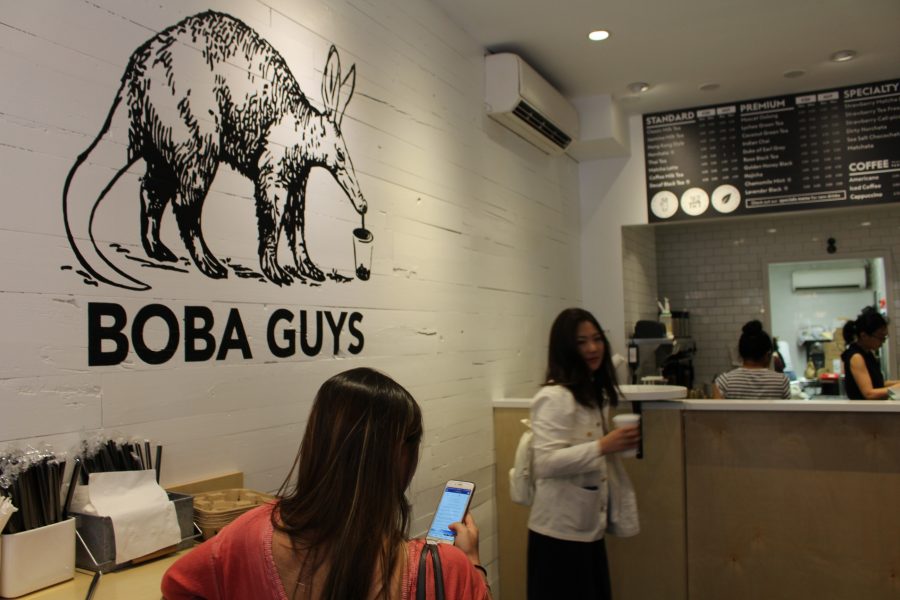Behind The Trend: Bubble Tea
The Boba Guys on campus consistently has a long line of people waiting for bubble tea. Known to some as boba, bubble tea consists of milk, tea, sugar, tapioca and occasionally a sweet flavoring.
April 25, 2017
Ask any NYU student what the latest food trend around campus is, and they will undeniably say bubble tea. It has become the go-to treat for grabbing between classes, because it doubles as both a carb-filled snack and caffeinated tea drink that will give you that extra boost to get through your 6 p.m. lecture. These days, it’s almost impossible to get through the day without seeing someone holding the drink with its instantly identifiable wide straw and dark tapioca bubbles peeking through.
Steinhardt junior Arturo Arce is one of many NYU students who enjoy a cup of bubble tea.
“I usually get it at least twice a week, but sometimes I take a week off so I don’t go broke,” Arce said.
If you are not familiar with bubble tea, it originated in Taiwan and is commonly made from a black, green or jasmine tea base with added sugar and typically, tapioca pearls that rest at the bottom. The drink is extremely customizable — size, milk, tea base, flavoring, sugar percentage, amount of ice and any other additions can be personalized. Why bubble tea has gained so much popularity is clear — it tastes great. But what does it really mean for your body to be able to add flavoring, sugar and brown sugar soaked tapioca balls to your drink?
Let’s break this down:
Milk
Although milk does have an amount of calcium that is beneficial, the condensed milk that is sometimes used to add thickness to bubble tea also adds fat and almost doubles the calorie count. Fortunately, for people who are lactose intolerant, most shops offer non-dairy alternatives such as oat milk and almond milk that do not affect the taste of the delicious bubble tea.
Tea
Common teas used for the base of the drink are black, green, jasmine and oolong. On their own, these teas have some nutritional value, as they are packed with antioxidants. However, after the addition of milk, sugar and artificial flavoring, this nutritional value is close to nonexistent.
Flavoring
Some shops offer fresh fruit such as strawberries, lychee or peaches as flavoring. However, most just use artificial fruit syrup that is high in sugar, fat and calories. Fresh fruit is super healthy — flavoring, not so much.
Sugar
Even more sugar syrup is added to sweeten to drink. The default sugar percentage added is 100 percent, but it is also offered in smaller amounts from 75 to 25 percent. Of course, sugar is known to be bad for your liver and teeth and contribute to obesity.
Tapioca
The most common addition to bubble tea is tapioca balls. Tapioca is a starch that is often used as a thickener in food, and has almost zero nutritional value. Basically, it is a carb that will give you quick energy.
If you are going to drink bubble tea, you can make it a little bit healthier by asking for less to zero sugar added, substitute condensed milk for zero creamer, oat or almond milk, and withhold the tapioca balls. But then again, as Tom Haverford from “Parks and Recreation” would say, “Treat yo self!”
Email Sydney Ernstberger at [email protected]
























































































































































